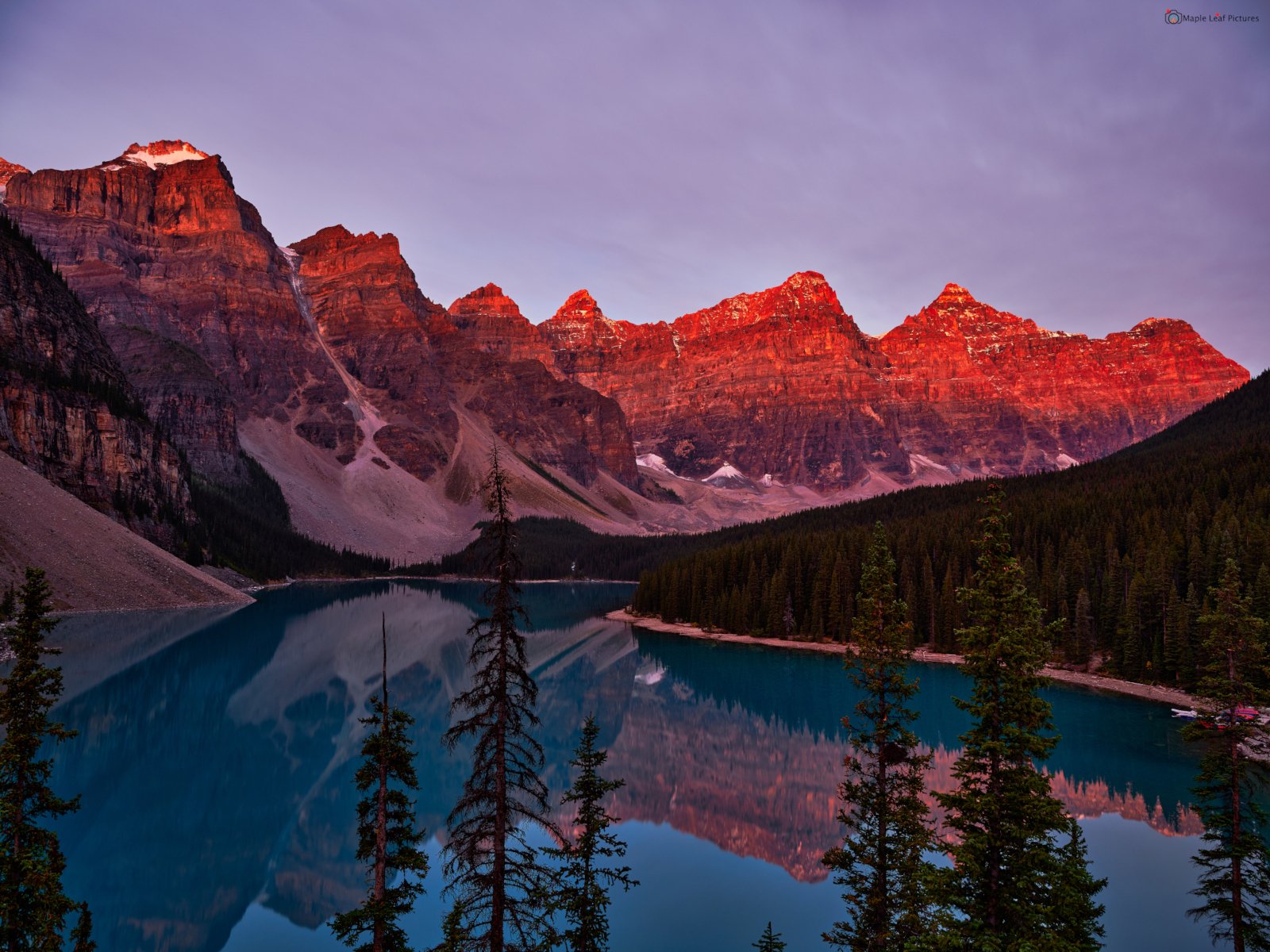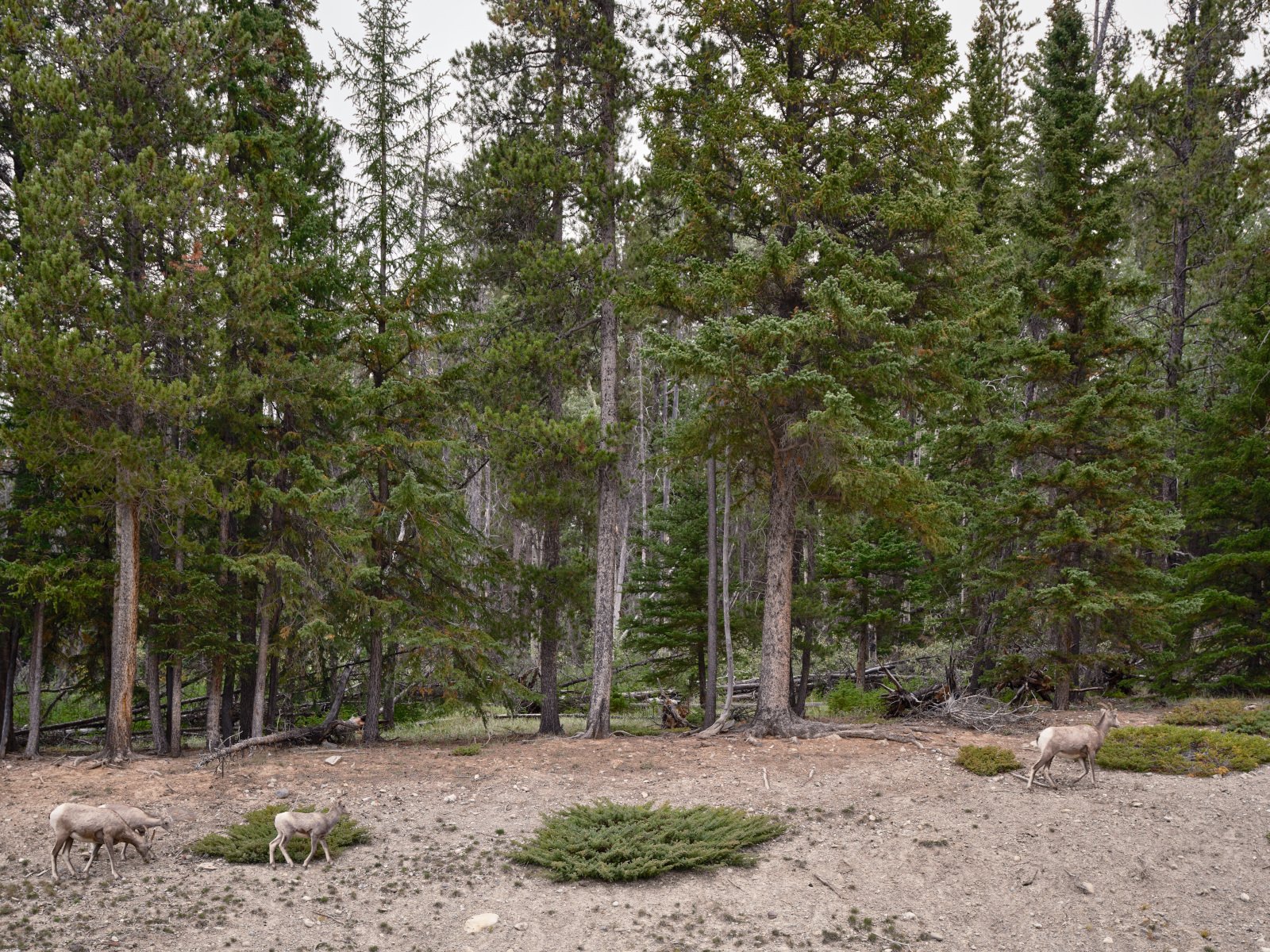Fujifilm GFX-100s Review: Part II
In the previous part of this series, we discussed first impressions of the Fujifilm GFX-100s and how it works out for Street/Travel and Outdoor photography. In this part, I discuss my experience shooting landscapes with the camera and then close with the final thoughts.
Fujifilm GFX-100s with GF 110mm F2 Lens
Handling experience - Landscape photography
Most of my photography is landscapes or nature — next to studio photography and small events at our local church. I live four hours away from Banff and Jasper that is ideal for testing this camera. Also, let’s not forget the river valley and Elk Island National Park close to my home.
I wanted to do a long hike at Sentinel Pass via Larch Valley Trail. But, since I cannot do a hike on the weekend, and I did not want to do that hike alone, I finally decided to photograph Moraine Lake (also called Reddit Lake) at sunrise and a few more places in Banff. I will be going alone for this trip. If I need to photograph the sunrise at 06:45 AM, I must be there at least by 06:00 AM. Since I know the composition (I have been there many times now), I know that time is sufficient to get settled on the spot. However, if I need to be there at 06:00 AM, I need to leave my home by 01:30, leaving some time for grabbing coffee and parking. Also, the Moraine Lake and Lake Louise get packed as early as 7:00 AM in summer, which leaves me no choice, but to be there at 06:00 AM at the latest.
I packed for the day, charged the battery (I had only one battery), and left home after a very short sleep of two hours. Photographing Moraine Lake and other popular spots in Banff made me excited and kept me awake during the long drive.
I was in for plenty of surprises when I reached the fully packed parking lot at 05:45 AM. I found a spot close to the exit to Moraine Lake, took the necessary gears, and left. Thanks to the moon, finding my way through the rocks in that short trail. The top of Moraine Lake Shoreline Trail was packed — mostly with tourists wanting to catch a glimpse of sunrise and some photographers (surprisingly, there were fewer local landscape photographers). My spot was empty, and so I climbed down and got settled with my camera and the other gears.
The list of shots includes a few sunrise shots, pre-sunrise shots, and panoramas before heading down for a few more shots at the lake. The weather app indicated that it would be cloudy soon, so I waited nervously for the epic sunrise — firing away a few shots as it became lit with pre-sunrise colors.
Suddenly the people start leaving the spot to the other side of the mountain. I turned my head, and I saw gorgeous red color sun rays lit the other side of the mountain. Resisting the urge to give up my spot chasing the red light, I waited patiently, listening to the whining of one lady about her mostly detached geek boyfriend to a stranger and asking for relationship advice. Also, I overheard the excited conversation of many friends in their native language — Malayalam who traveled from India to Banff. They are excited to show off the footage from the Moraine Lake sunrise to their subscribers.
As I kept firing away occasionally, the mountain’s peak at the lake light orange, and the lake caught its reflection. I kept firing shots every few seconds and adjusting the composition mildly as the sunrise hit its peak. Once the sun reached its highest point, the beautiful light disappeared, and so did the majority of the crowd. I moved up the mountain to take the panorama as the influencers started taking short videos to showcase their exciting life visiting beautiful places.
The camera let me photograph the location without distraction which is a big testament to its abilities. However, it did make me feel its shortcomings when it occurred — thankfully, not in crucial moments. First, it is time to ditch LCDs and move towards OLEDs for cameras this expensive (although such a move would make it expensive, at least by $750). I got too many reflections on the LCD to make it useful for adjusting the composition or the settings. Thankfully, the LCD tilt feature, combined with pushing the brightness to the max, helped overcome this shortcoming eventually.
I also understood the utility of the tilt adapter trying to look through the viewfinder bending at a weird angle to preserve the composition (it was low to the ground to avoid some branches and capture the immediate foreground) and use the viewfinder to adjust the settings. The tilt adapter would have provided me with the ability to overcome this shortcoming without pushing the brightness of the rear LCD to the max at the expense of the battery. Mitigating both these shortcomings is not possible for the price-point and the size of the GFX-100s. It is a compromise I am willing to make, considering I do not have to face such shortcomings for the majority of my photographs.
Manual focus was easy with the camera to get tack sharp images (which I will confirm later in my post-processing experience). After taking a few more insurance shots at the early morning soft light, I left the mountain and went to the lake. I spent some more time and then got into the car.
The sky starts to become cloudy at this time — 08:00 AM — confirming the weather forecast. I ate some bananas and apples as I contemplated between Lake Louis and Lake Minnewanka. I decided against Lake Louise and drove towards Lake Minnewanka, enjoying the drive.
Lake Minnewanka
Lake Minnewanka was not as crowded as Moraine Lake (or Lake Louis — based on my previous visits to the lake). An overcast sky means I will get soft light, but no blue skies and the chunky clouds — a trade-off I am happy for the view. I set the tripod to its maximum height and took many shots using the manual focus. The tilt LCD with maximum brightness helped me determine the best composition for the location. The tilt-shift adapter wouldn’t help in this situation, so I will have to rely on the LCD screen on GFX-100 or GFX-50s.
The weather was a bit whacky, so I had to underexpose for the shots, trusting the dynamic range capabilities of this camera would perform wonders.
After spending more than two hours at the lake, I decided to head to the Two Jack Lakes — ten minutes from Lake Minnewanka.
Two Jack Lakes
I see in new photographic eyes each time I visit Banff — despite being there more than seven times in three years. I liked the small island at the lake. Before reaching the parking lot, I saw a few mountain goats walking down the road. I stopped the car and jumped out with the camera. Photographing wild animals relying on autofocus did not do a good job. I learned that I could not rely on the autofocus performance for capturing those animals quickly, and I switched to dictating the camera where to focus, which resulted in decent results. I still used the autofocus, but I moved around the focus point using my thumb nob. Moving around the focus points using the thumb nob wasn’t that bad. I didn’t have to take my eyes off the camera to get to the nob.
I learned there were more mountain goats at the parking lot, so I got into my car and reached the parking lot. I decided to ditch the goats and went down to the lake to find my composition. I was almost done photographing and wanted to go home by this time. I guess lack of sleep does that to you despite having an awesome camera. The overcast sky did not help either.
I walked around with the camera, backpack, and tripod finding different compositions, taking a few pictures along the way. After spending another hour taking pictures, I left, got into the car, and drove towards the cascade pond. I spent another hour at the pond taking pictures and then decided to call it a day at 03:00 PM.
I packed my gears, got a burger at the A&W, and drove back to Edmonton — stopping once on the way to take two more pictures.
Post-processing
I never liked compressed files, so I got the RAW images in their full glory — 200+MB per file. The import into Capture One Pro 21 was not that bad. I spent another hour culling the images, and now I have a selection of images to my taste. However, I did not delete the other pictures (In my experience, I found that I have found a better balance in the editing of some old pictures years after I took them) to save space.
My laptop is the last batch of intel 16-inches MacBooks with Intel i7 6-core, 32 GB RAM, and AMD Radeon Pro 5300M graphics card. And it is paired with the DELL 32-Inch 4K monitor, providing excellent real estate for editing and previewing the files. Surprisingly the MacBook did not sweat — for the most part — except for the panorama.
Between Capture One Pro 21 and Affinity Photo for panorama stitching, the fan ran noise was high, and I could feel my MacBook struggling to keep up with the tons of information. Once I stitch the images, switching back to the Capture One Pro 21 took two solid minutes. The stitched TIFF file is close to 2GB for the below panoramic image. However, once I closed the Affinity Pro, the Capture One Pro 21 was reasonably fast — perhaps mainly due to more cores and RAM available now.
The Moraine Lake in all it’s glory
I can see how you could quickly run over hard disk drive shooting with the GFX-100s. But since hard drives are cheap, you could keep adding them to archive your work and come back to them later — not deleting the majority of your images (except those sucky ones). Shadow recovery was steller thanks to the amazing dynamic range captured by the 16 bit RAW.
After spending the next few days editing the landscape images and updating the Instagram and the website, I returned the camera to the McBain Camera with a heavy heart.
Shortcomings
I don’t believe there is a camera without any shortcomings, and you will find few depending on your expectation from the camera. I have listed some of the shortcomings I faced based on my personal experience. The shortcomings are not major enough for me to have second thoughts to buy.
Lack of tilt-shift adapter for using the Viewfinder instead of LCD on a bright sunny day, holding the camera waist heigh
Traditional LCD instead of OLED to review the settings, preview the photo and compose your shot
Lack of option to add more than one battery
Lack of Fujifilm trademark retro-styled physical dials for ISO and Shutter speed.
Less than stellar, but yet usable autofocus
Lack of additional USB-C port to allow tethering while charging or charging while using the remote shutter
Battery life does not allow using all the features that help to nail a shot with a modern medium format (such as boosting the viewfinder)
Final thoughts and conclusion
It was a pleasure to use the Fujifilm GFX-100s for a week, and I can see why it is their best-selling camera. It gives almost Canon EOS 5D Mark IV-isque autofocus performance, better responsiveness, and overall improvement — all for 7,300 Canadian dollars. While the camera added major improvements for the needs, such as street photography, studio, outdoor portraits, and events, the improvements are marginal for landscape (if you do not consider the megapixels).
The Fujifilm GFX-100s is aimed at amateurs, hobbyists, and professional photographers used to the much slower medium format camera, and it is not going to disappoint them. Walking around with the camera is better than my GFX-50s, and that opens up more doors for taking it with you for hiking (which I used to do with my GFX-50s), street photography, or even outdoor portrait sessions. However, the value you’d get from this camera lies in whether you print the large images — as I do (or commercial works). Anything above 40x30 inches showcases the life-like details captured by this camera. Posting your images online will not showcase its abilities.
I am looking forward to owning this camera in the near future.













